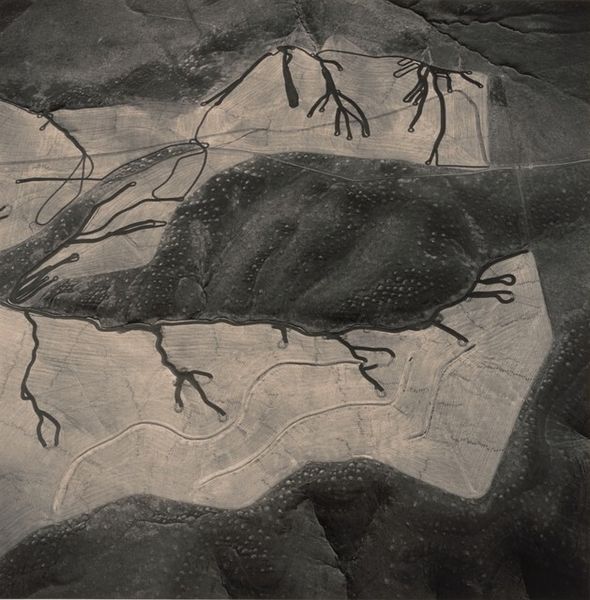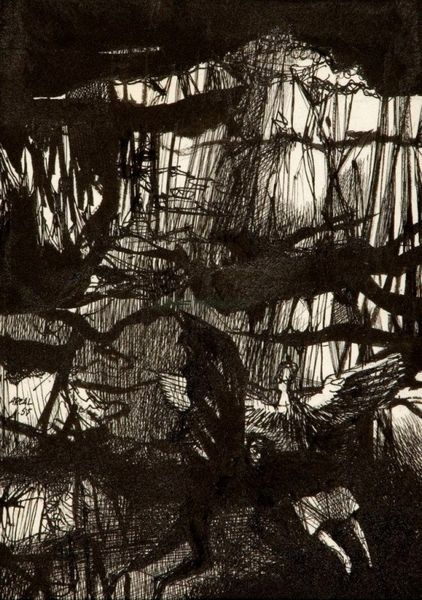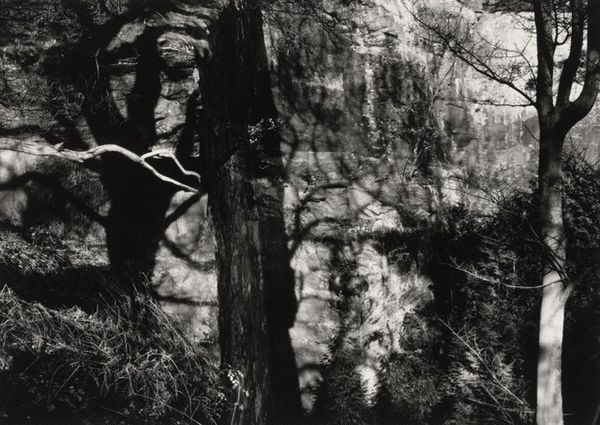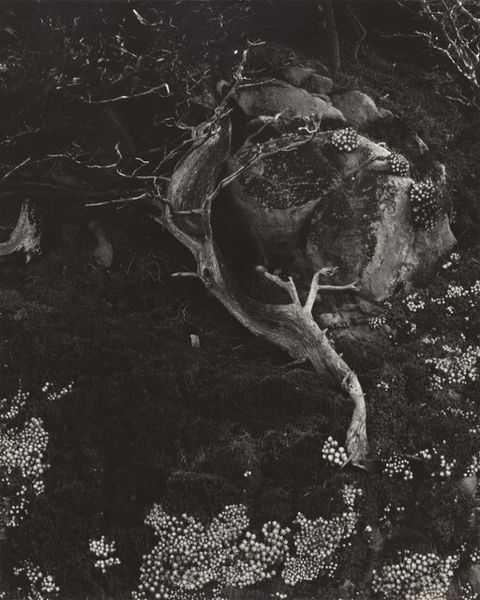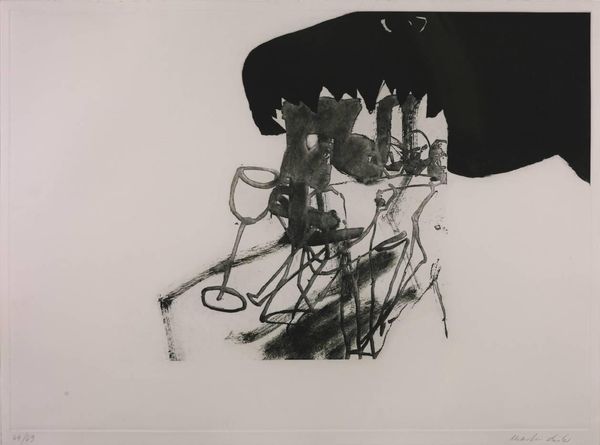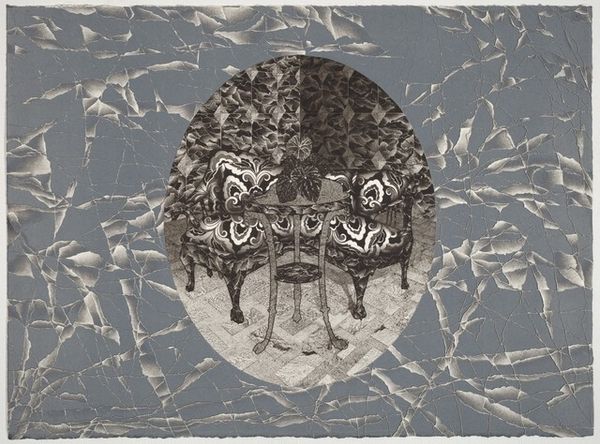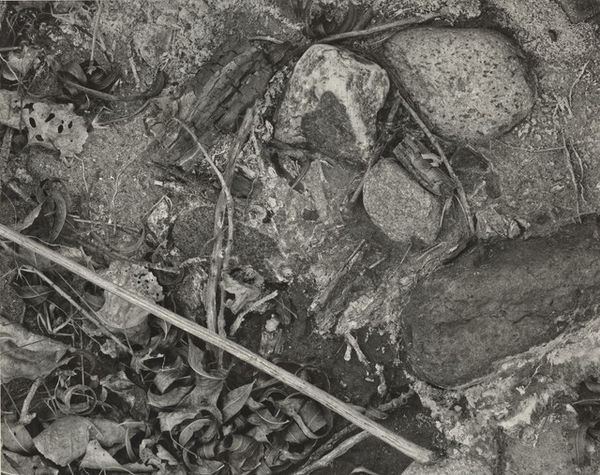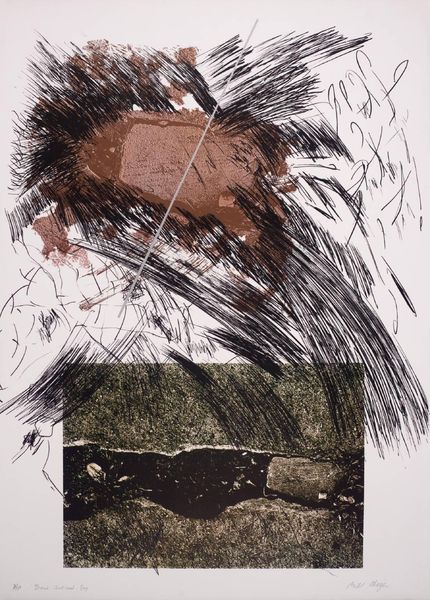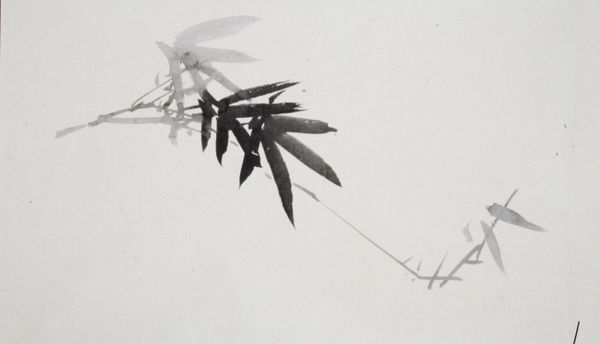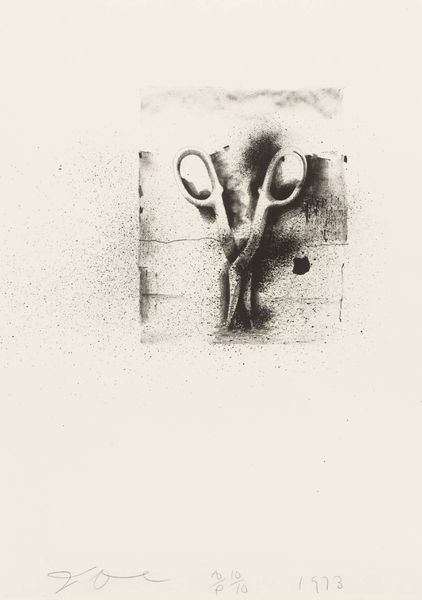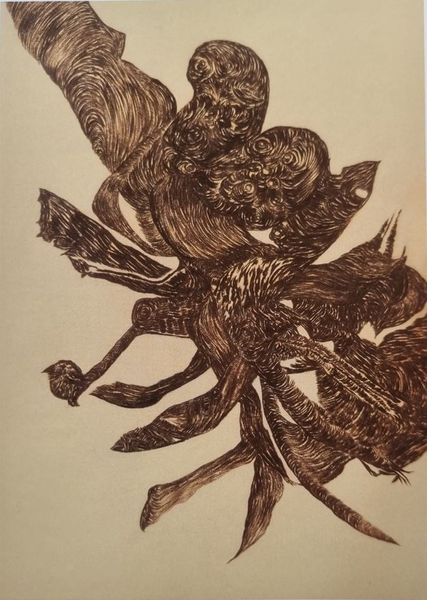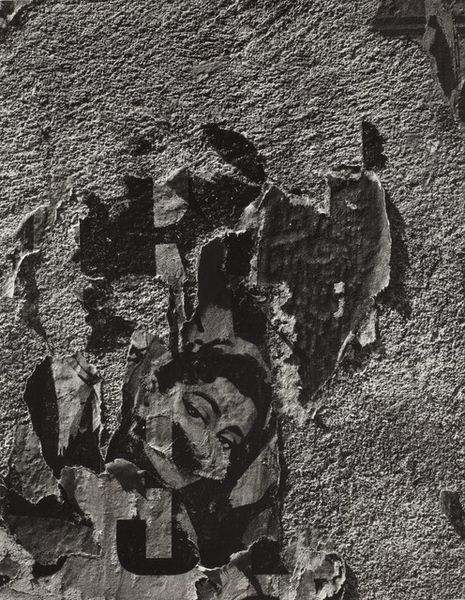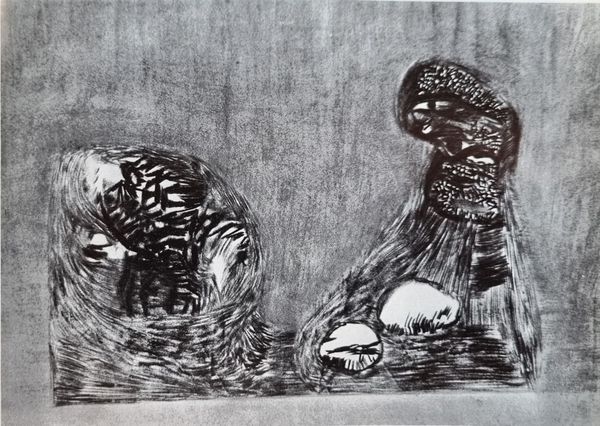
assemblage, photography
#
still-life-photography
#
conceptual-art
#
assemblage
#
sculpture
#
appropriation
#
photography
Dimensions: image/sheet: 20.32 × 25.4 cm (8 × 10 in.)
Copyright: National Gallery of Art: CC0 1.0
Curator: This is Marlon Fuentes' "Good and Evil," an assemblage created in 1981 and captured through photography. What are your initial thoughts on this rather striking image? Editor: It’s undeniably unsettling. The black and white starkness adds to the somber mood, and the central subject looks…almost like a sacrificial offering. There is something distinctly ritualistic about the image’s organization. Curator: Ritualistic is a great word for it. Thinking about still-life-photography more broadly, Fuentes pushes against that tradition, unsettling viewers. The turtle's carcass, laid bare and decorated with what appears to be small stones arranged as a crucifix, becomes a site where religious and moral conflicts converge. It uses appropriation, but for what purpose? Editor: I see a strong visual reference to traditional iconography, particularly martyrdom. The stones evoke rosary beads or the stations of the cross. Is Fuentes pointing towards humanity's capacity for both creation and destruction, embodied in this single creature? The turtle could symbolize perseverance and longevity in many cultures. Curator: Yes, that’s a reading that aligns well with a historical, postcolonial reading. Fuentes' assemblage invites considerations of species extinction linked to human intervention and climate change. Furthermore, think about religious dominance through the lens of critical race theory, which questions established power structures. The "Good and Evil" theme becomes an urgent warning about our moment. Editor: Indeed, a heavy weight of symbolic meaning for what initially seems like a straightforward composition. The dark tangle of branches or roots framing the central figure further adds to a sense of entombment, as if burying a loss or trauma. Curator: Fuentes seems to weave his personal experience and historical context into a broader statement of collective consciousness regarding the crisis we see now. Editor: The turtle in death carries symbolic burdens both ancient and painfully contemporary. Curator: An assemblage that provokes questions, encouraging thoughtful deliberation about who bears responsibility, even decades later. Editor: Yes. Perhaps this compels the viewer to question established frameworks, not just of ecological sustainability but also religious ethics, in ways that ripple out from the visual culture embedded in the art.
Comments
No comments
Be the first to comment and join the conversation on the ultimate creative platform.
